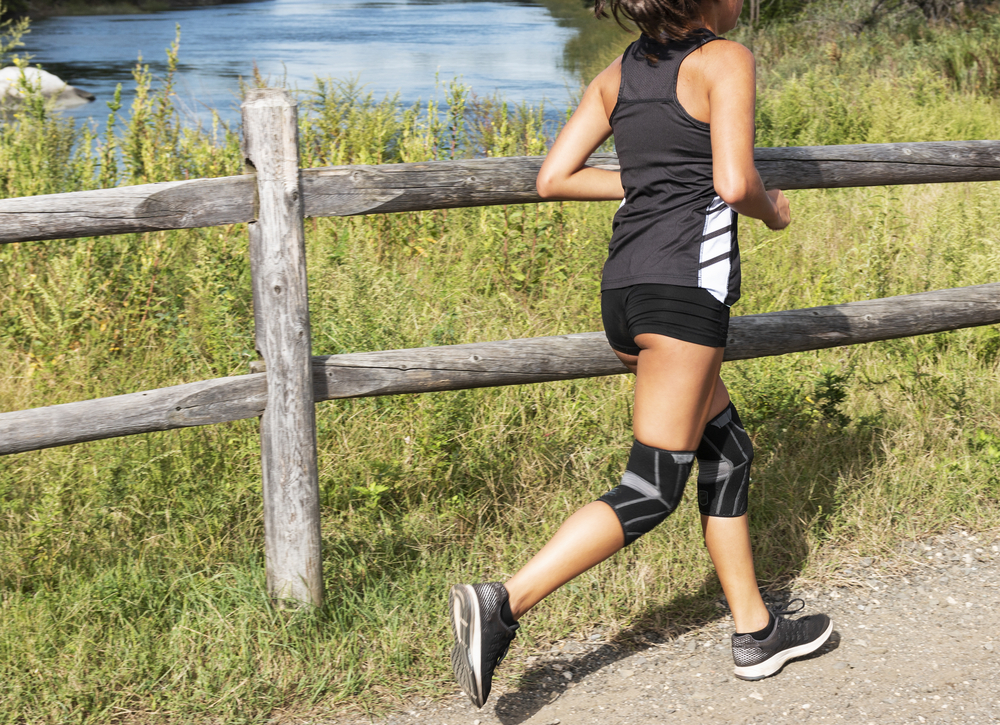7 Ways to Reduce Joint Strain during High-Impact Activities
 Exercise is an essential part of overall health and wellbeing. But sometimes, it can really put a strain on your body. If you’re participating in any high-impact activities like basketball, HIIT training, or even just running, it’s important that you protect your joints during these activities to avoid joint pain and long-term damage. Here are 7 ways you can reduce joint strain during your high-impact activities.
Exercise is an essential part of overall health and wellbeing. But sometimes, it can really put a strain on your body. If you’re participating in any high-impact activities like basketball, HIIT training, or even just running, it’s important that you protect your joints during these activities to avoid joint pain and long-term damage. Here are 7 ways you can reduce joint strain during your high-impact activities.
Protect Injured Areas
First and foremost, be sure to protect any joints or other areas of your body that have recently been injured. If the injury is serious enough, avoid high-impact activities altogether, and give your body the rest it deserves. If you’re ready to get back into your old activities, consider a support brace for the recently injured joint. This will help to support that joint as it rebuilds its strength and mobility, and will help to prevent re-injury of the area.
Pay Attention to Pain
“No pain, no gain.” It’s a common saying in the world of athletics. And while pushing yourself physically does lead to progress, you should never push your body beyond its abilities. Never ignore the signals that your body is giving you. If your ankle is flaring with pain when you increase your pace from a walk to a run, keep your pace at a walk. Don’t “power through it.” This is a recipe for major joint strain, and a potentially serious injury.
Mind Your Form
A great deal of the joint strain that active individuals experience is due to improper form during exercise. For example, when you’re running, your foot should ideally strike in such a way that your shin is perpendicular to the ground; this usually means striking with the ball of your foot.
If you strike too far into your heel or too far forward on your toes, you’re hitting the ground at too much of an angle, and this can cause strain in your joints. A perpendicular placement of each leg as you run will enable your ankle, knee, and hip joints to absorb the impact simultaneously, thereby reducing the load and the strain on each joint as a whole.
Additionally, keep in mind that this applies to more than just high-impact activities. Improper form during weight-lifting and resistance exercises can also strain the joints. This is most commonly seen with squats, when the individual allows their knees to travel too far forward, past their toes. This can put strain on your knee joints. If you’re ever unsure about your form during exercise, consult a personal trainer or similar professional.
Strengthen Surrounding Muscles
One of the best ways you can protect your joints is by strengthening the muscles around them. The ligaments in your joints work together with the surrounding muscles as they stretch, contract, and absorb impacts. The stronger those surrounding muscle fibers are, the more support your joints will have, and the less strained they will feel during high-impact activities.
Always Warm Up
Warmups are one of the most important things you can do to protect not only your joints, but your entire body from injury during high-impact activities. Before you begin exercise, your muscle fibers and joints are stiff and tight. They need to be slowly warmed up and stretched out before you begin any sort of physical activity—but especially high-impact ones. Be sure to stretch a sufficient amount for the type of exercise you’re going to do. For higher-impact activities like plyometrics, you should be doing a longer warmup.
Get Proper Footwear
If you’re doing any kind of athletic activity, it’s important that you have the right shoes for the job. For individuals participating in high-impact activities, it’s essential to ensure that your shoes provide the proper amount of support and cushioning. If your shoes aren’t absorbing any of the impact, then every jump and every foot strike is going straight into your body. The better your shoe support, the less impact your joints have to absorb.
Alternate Activities
Finally, make sure that not all of your workouts are high-impact activities. Alternate between high-impact and low-impact exercises, and ensure that you’re giving your body enough rest. High-impact activities actually cause damage to your joints on a microscopic level. And, while this is completely normal and just fine for an active individual, it does mean that your joints need time to recover and heal from that damage. If you don’t give them the time they need, that microscopic damage can really add up over time.
If you’re looking for support braces and other joint support equipment, stop by one of our many Texas locations today.